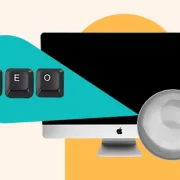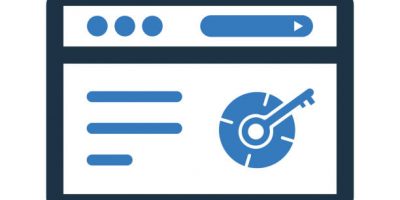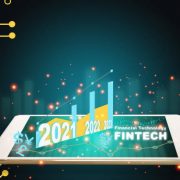Online and open education are changing the way that education is delivered. E-learning will grow 15-fold in the next decade and account for 30 educational provisions.
Educators must shape this shift to ensure that technology is used efficiently and effectively. New technology will have a profound impact on the way that students interact, learn and collaborate.
To keep up with these changes, educators must make sure that the infrastructure is in place to support them, that classrooms are adapted to accommodate new teaching methods, and that teachers are adequately trained to utilize technology.
Technology will change education in many ways over the next few years. These include mobile learning, collaborative learning, learning analytics, and innovation culture.
Collaborative Learning
Many universities have changed their policies to promote collaborative learning. Future-oriented universities encourage learning groups instead of the traditional 50-minute lectures and hours of study in the library.
It has also meant that the interior design of learning spaces has changed, as well as new technologies to allow students and teachers to exchange research. The podium in front of the rows of desks and chairs may no longer be the focal point for classrooms. Spaces are now open, with whiteboards, multiple screens, and movable furniture.
Boise State University cites research that shows an active learning environment benefits students. The technology used Solstice, allows students and faculty to share or stream files on any monitor in the classroom.
Furniture can be easily rearranged to suit the needs of each individual. By breaking down silos and reducing the perceived gap between students and educators, open learning spaces encourage sharing of ideas. These spaces align with the real-life work environment where graduates will be expected to speak up at meetings, defend new ideas, and work with diverse backgrounds.
Measurement of Learning/Learning Analytics
Education providers can track student data like never before. Previously, the only available measures to staff were attendance and test results. They can also track student engagement through online discussion groups and their mastery of subjects through self-assessed quizzes. They can even monitor the time spent in the library using swipe cards.
Although there are ethical implications that universities should consider when retaining and gaining access to this data, staff can use it to reach out to students otherwise overlooked. The students should be able to view this data to compare their engagement with their peers.
Nottingham Trent University provides students with a dashboard that compares their performance against their peers. These developments will allow staff to intervene earlier with students who seem to be struggling. They should also encourage students to take more responsibility for their studies.
Information can be used by teaching staff to adapt the way they deliver courses and concepts. The University of Hong Kong uses student engagement scores to help develop curriculum and adjust teaching methods. Lecturers no longer have to wait for finals to discover that students need to grasp the basics of their study! Real-time analytics will allow them to adjust their teaching to ensure students get the core concepts.
The University of Purdue Indiana implemented data analytics, which led to earlier identification of issues, even as early as the second week of the term. Students also sought help earlier. The data analytics led to a 12% rise in B and C grades, while D and F rates dropped by 14%.
Innovation Culture
Innovation has been a buzzword in education and industry in recent years. What are the implications for education providers in the future?
Education institutions are recognized as driving forces of innovation and entrepreneurship. Teachers Insurance and Annuity Association of America published a report identifying the factors required to support strategic innovations. The study identified the need for a diverse group of people who “bring along a variety of proficiencies and opinions.”
This can affect how technology is used to promote innovation and teaching. Faculty can take on the role of facilitators, allowing groups to work together and generate new ideas. This is an alternative to lecturing from a fixed platform.
Diverse groups have different learning preferences. Adaptive learning technologies can help students with diverse backgrounds and needs. The development of adaptive learning technologies will require a strong understanding of learning analytics. While there are costs involved in developing adaptive technology, the benefits can be seen in increased student engagement and faster mastery of subjects.
EDUCAUSE reports that when students at risk used blended education, their pass rate increased by a third. Students also learned the material at a 50% faster speed.
Mobile Learning
Mobile learning is a trend that will continue shortly, as almost every student has a computer with them in the form of a tablet or smartphone. It is estimated that by 2020, the global market for mobile learning will increase by 36% per year, reaching $ 37,6 billion.
Many educators are aware that mobile devices enhance education. However, others still see them as distractions in the classroom. Education providers can use mobile technology in the classroom to engage students.
Middlesex University conducted a study on mobile technologies by a group of first-year anatomy students. Students were provided with iPads that had apps that featured 3D muscle and bone imagery and included classroom activities. The iPad group received higher grades and said using the technology was fun.
Some universities create apps for mobile learning to support their students. Involving key stakeholders, such as educators and students, in the app’s development ensures they are relevant for those using them.
Colorado Technical University is an excellent example of how students can be involved in the development of mobile learning applications to reduce pain points. This will help to create technology that allows students “fit education around their lives, not the other way. ” The app was developed after listening to the feedback of students. It focuses on real-time notifications, access to university help, and time management tools. More than half of the students have downloaded and logged into the app. Developers continue to listen and implement student feedback to improve the user experience.




















Comments